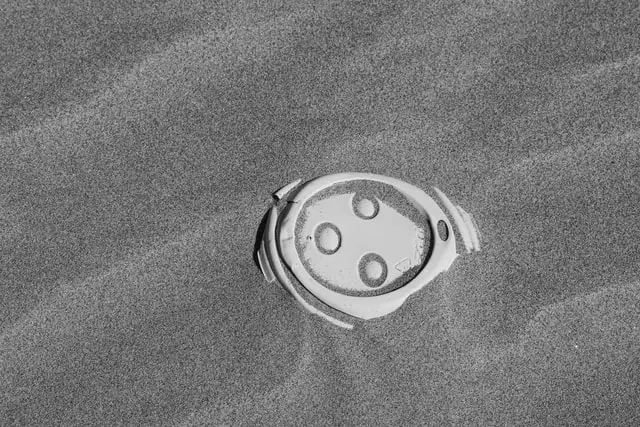You’ve probably heard about the negative impact of plastics on our environment. But you may be surprised to know that plastic coffee cups are one of the biggest contributors to this problem. Every day, Americans throw away more than a billion plastic coffee cups.
Most of them end up in landfills or pollute our rivers and streams. Coffee is a beverage that is very sensitive to its packaging. This explains why most coffee chains use disposable plastic cups when selling their products.
After all, they need to protect customers from getting burned and also prevent their desktops from getting messy with drippy condensation rings. But these reasons aren’t sufficient enough to justify the adverse effects that come with using plastic as a packaging material. To understand why, keep reading!

Can You Put Coffee in A Plastic Cup?
In a word: No! You’ll likely end up spilling your coffee all over yourself due to the instability of the cup. Coffee cups are designed to be used for one-time use only.
Apart from being flimsy, plastic cups don’t have any heat retention abilities. As soon as you pour in a hot beverage, the cup will start to weaken and collapse. This is dangerous as you run the risk of getting splashed with scalding hot coffee.
Plastic cups are designed to be used with cold beverages. Even though they’re advertised as being “microwave friendly,” this doesn’t mean that you can use them for your daily coffee ritual. With time, coffee cups made with plastic become brittle.
They also release carcinogenic gases when heated up in a microwave. These gases can be hazardous to your health and have been linked to some serious health issues.
Are plastic cups safe for hot drinks?
No! As mentioned above, coffee cups made with plastic are unstable and aren’t fit for hot drinks. Using these types of cups for your morning coffee ritual can be extremely unhealthy. Plastic cups emit harmful chemicals when heated up in a microwave.
Researchers have found that these chemicals can lead to serious health issues, like cancer! The Facts You May Not Know About Coffee Cups Made With Plastic, It can damage your kidneys and liver, and It can cause your blood pressure to rise.
It can increase your risk of contracting a type of cancer known as lymphoma, It can cause your body to retain more fat, It can have a negative impact on your cardiovascular system, It can lead to Type 2 diabetes, It can cause pregnant women to miscarry
A Brief History of the Cup: How We Got Here
Invented in the 1930s, coffee cups made with polystyrene are a relatively new invention. Most coffee chains use polystyrene to package their coffee because it’s cheap and can be easily molded into any shape or design.
But what was once hailed as an ingenious invention has now become a menace to our environment. Most coffee cups are designed to be used only once. This means that most of them end up in landfills or pollute our waterways.
The sheer number of cups that we use on a daily basis is alarming. It has been estimated that more than a billion disposable coffee cups are thrown away every year. This number is expected to rise as more and more people start consuming coffee!
The Environmental Impact of Coffee Cups Made with Polystyrene
As we’ve discussed above, most coffee cups are made with polystyrene. This is an unstable material that breaks down very slowly, if at all. As a result, these cups take a long time to decompose. Coffee cups made with polystyrene are non-biodegradable.
This means that they don’t break down and get absorbed by the environment. Instead, they remain in our soil and water for decades. This can have a detrimental impact on our environment. Coffee cups made with polystyrene can be dangerous for our environment.
They can easily get mixed with other recyclable materials, thereby rendering them useless. Since these cups are non-biodegradable, they take a long time to decompose. They also release hydrochloric acid when they start to break down. This can be hazardous to our waterways and soil.
The Environmental Impact of Coffee Cups Made with Polyethylene Terephthalate (PET)
Coffee cups made with polyethylene terephthalate are often mistaken for toxic polystyrene cups. But there are several significant differences between the two. Coffee cups made with polyethylene terephthalate are biodegradable and compostable.
They’re also more stable than polystyrene cups due to the fact that they’re made from a synthetic polymer. Coffee cups made with polyethylene terephthalate can break down in about six months. This means that they’ll degrade and get absorbed by the environment in the same time span.
The Environmental Impact of Coffee Cups Made with Absurdity
Coffee cups made with a mix of paper and polyethylene terephthalate can be highly unstable. They might be able to retain your hot beverage and prevent it from spilling all over your desk. But they also might end up spilling your coffee all over your desk due to their unstable nature.
Coffee cups made with a mix of paper and polyethylene terephthalate can be extremely harmful to our environment. They’re non-biodegradable and can remain in our soil and water for decades. Coffee cups made with a mix of paper and polyethylene terephthalate can be hazardous to our health. They can leach toxic chemicals into your beverages.
Conclusion
Coffee is a beverage that we consume on a daily basis. It’s almost impossible to start your day without a cup of coffee. But it’s important to know that coffee cups aren’t perfect packaging vessels. Coffee cups made with plastics can be harmful to our health.
They can also be detrimental to our environment. It’s important to choose coffee cups that are biodegradable and compostable. You can also use reusable coffee mugs. These are just some of the facts you may not know about coffee cups.
Hopefully, this article will help you make better choices when it comes to choosing the right vessel for your coffee!




